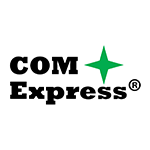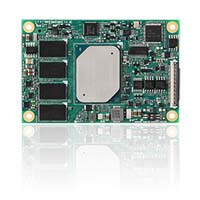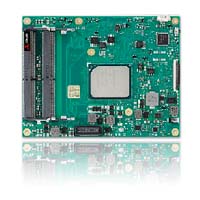In this article:
What is the COM express module?
Assured Systems develop COM express platforms with the latest specifications to perform in industrial and embedded environments.
 |
 |
COM Express is an embedded computing specification. It is a sub-type of Small Form Factor (SFF) computers and Computer on Module (COM) devices. COM devices are modular computers, printed on a single printed circuit board as a complete computer, including RAM and microprocessor. They are a type of System on a Chip (SOC) and are standalone devices. COM Express entered the market in 2005 and have been progressing since to meet the expanding uses of COM Express technology.
COM Express specifications are determined and regulated by PICMG – formally known as the PCI Industrial Computer Manufacturers Group – which calls itself a “non-profit consortium of companies and organizations that collaboratively develop open standards.” The COM Express product is one of many developed by PICMG, whose goals have been to take desktop PCI standards to industrial applications. Their technology has been used in packaging, mechanical and thermal design as well as system management and military computing applications.
The Development of the COM Express Standard
The COM Express standard was first released in 2005 by the PCI Industrial Manufacturers Group (PICMG) and it sought to provide standardized module interfaces for several different target applications. It did so by defining five different module ‘Types’ each implementing different pinout configurations and feature sets on one or two 220-pin connectors. In that way, COM Express is a standard of multiple standards. The latest COM Express specification was released in 2017 and is known as Revision 3.0.
There are 8 different pin outs defined in the COM Express specification. The latest pin-out added in the Revision 3.0 of the COM Express specification is Type 7. The most commonly used pin outs are Type 6 and Type 10. COM Express Revision 3.0 removed legacy Type 1, Type 2, Type 3, Type 4, and Type 5, recommending that new designs should use the newer Type 6, Type 7 and Type 10 COMs.
COM Express Standardized Board Form Factors
The COM Express standard defines form factors and pinouts for Computer-on-Modules. The standard includes the mini form factor (84 x 55mm), the compact form factor (95 x 95mm), the basic form factor (125 x 95mm), and the extended form factor (155 x 125mm). Each board is available with the following COM pin out types.
 |
 |
||
|
COM Express Mini 84 x 55mm |
COM Express Compact 95 x 95mm |
COM Express Basic 125 x 95mm |
COM Express Extended 155 x 125mm |
| COM Type 10 | COM Type 6 | COM Type 6 & 7 | COM Type 7 |
Extended COM Express Boards with Type 7 'Server-on-Modules'
The extended COM Express did not reach market relevance in the past. With the new, server oriented pinout Type 7 which is defined in the COM Express specification Revision 3.0, this might come in to play as server type applications require more DRAM capacity and also look for more extreme CPU performance levels. COM Express supports a maximum of 137 Watt power consumption. The larger size provides more real estate for more memory and allows for better heat transmission to support higher power consumption. When comparing the new Type 7 pinout to the Type 6 pinout it becomes visible that this will not be a replacement. It’s a definition that clearly targets headless server applications with low power consumption, high computing density and high I/O throughput.
When compared to Type 6 the new Type 7 definition removes all audio and video interfaces, the upper 4 USB 2.0, ExpressCard and the upper 2 SATA ports. This releases 60 pins on the AB connector and another 42 pins on the CD connector. These 102 newly released pins, in combination with some previously reserved pins, have been used to add extra PCI Express lanes and four 10 GB Ethernet KR lanes with a complete set of NC-SI sideband signals.
| Type 7 COM Express modules can provide a maximum of features |
|











